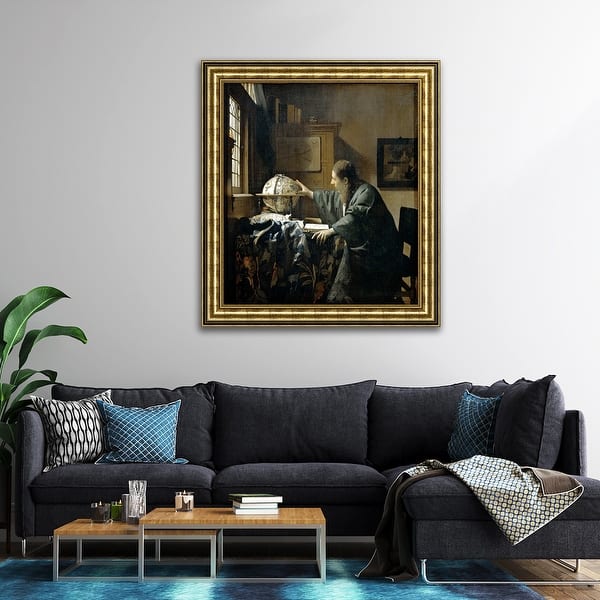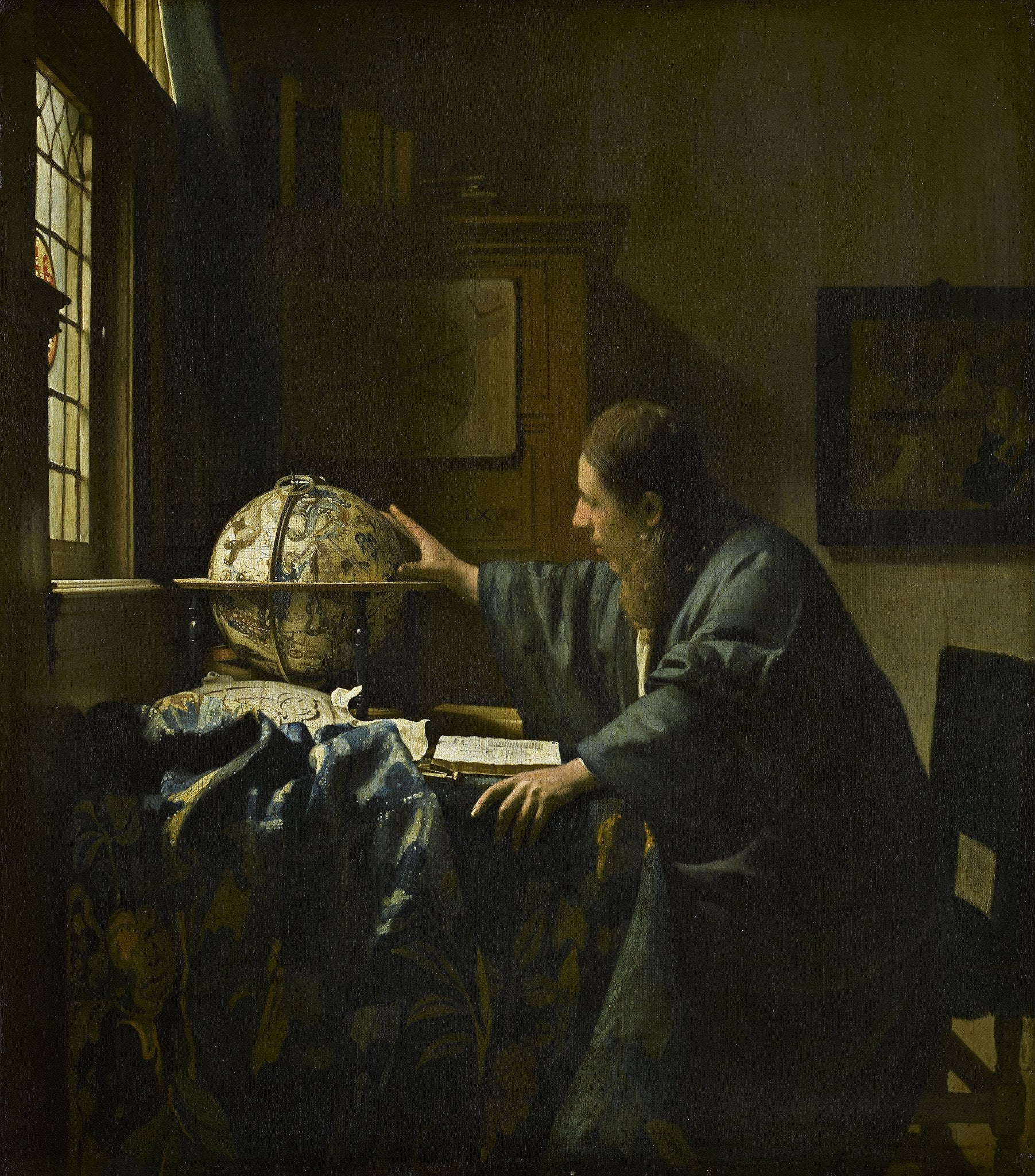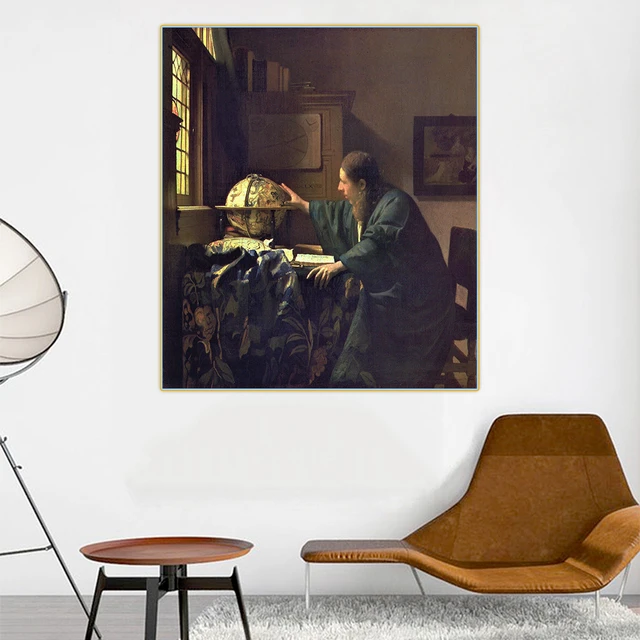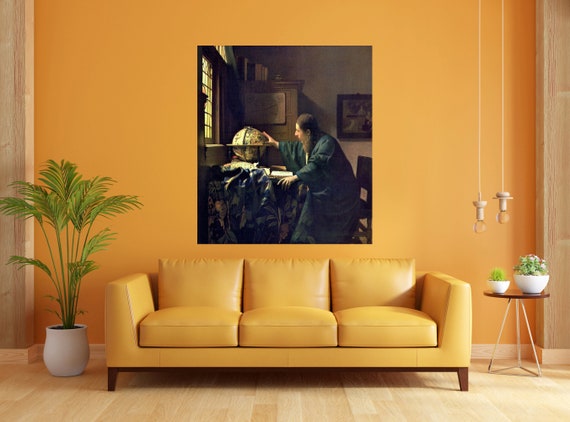Description
"The Astronomer" is an oil painting created by the Dutch artist Johannes Vermeer around the year 1668. The painting shows a seated man with long hair inspecting an astronomical globe in front of him. Next to the globe is an astrolabe, an instrument for making astronomical measurements. In front of the astronomer is an open book on astronomy on the table.
Some art experts have suggested that the man portrayed in the painting could be Antonie van Leeuwenhoek, who was a friend and contemporary of Vermeer's and one of the first microscopists in the history of science. This theory is based on the similarity of the facial features of the man in the painting to those of the scientist.
Interestingly, "The Astronomer" and another Vermeer painting, "The Geography", were lost for many years, only being discovered in 1881 at a Paris auctioneer. Both works are believed to have been commissioned by Vermeer's patron, Antonie van Leeuwenhoek, and were in the possession of his family for several generations before being sold.
Another curiosity about "The Astronomer" is that some details in the painting seem to indicate that Vermeer may have used lenses and camera obscuras to help him create the work. For example, the perspective and lighting are very accurate and realistic, and some objects in the painting have a sharpness and level of detail that would be difficult to achieve without the aid of these instruments.
The theory that Vermeer used camera obscuras and lenses to create his paintings has long been the subject of debate among art experts, with some skeptical. However, others argue that this technique could have been a useful tool for Vermeer, as it would have allowed him to achieve a high level of realism in his works and capture light and color more accurately.
Today, "The Astronomer" is one of Vermeer's most famous and appreciated works and is in the Louvre in Paris.
The Astronomer is ranked no. 39 on the list of famous paintings





